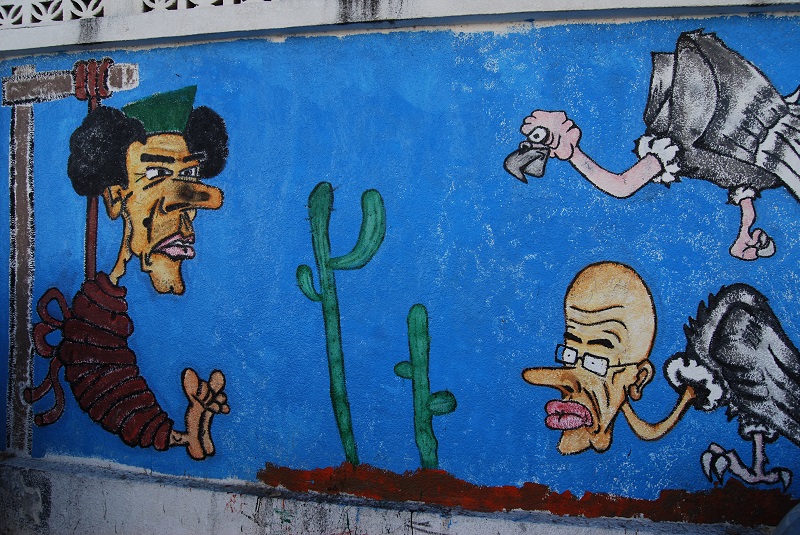YESTERDAY the last foreign airline operating flights into Libya suspended operations. Turkish Airlines cancelled its service into Misrata and that was that: outsiders considering visiting the beleaguered post Arab Spring country must now, it appears, arrive by land or boat.
With Libyan airlines banned last year from travelling into EU airspace for security reasons, the country is effectively cut off.
Nobody much seems to have noticed how far Libya has slumped. The odd report on the latest flare-up of violence – a beheading, an attack on an oil tanker (two crew members killed), Coptic Christians seized by militants – occasionally makes the news.
But the ghastly events in the country with the biggest southern Mediterranean shoreline – facing tourist resorts across the water where so many of us will be spending our summer holidays – are going largely unnoticed.
The rise of Isis in Syria and Iraq came out of the blue. The intelligence agencies of the West failed to see it coming last year and we have been living with the shock effects ever since. Great swathes of the Middle East now, as we have seen, appear ungovernable.
It seems that something of the sort is quite likely to happen in Libya, much closer to home than the badlands of Iraq, where we sent our troops to defeat Saddam Hussein, thus starting the chain of events that has led to the current mess there.
Much of western Libya is now controlled by a militia based in Misrata. Meanwhile, in the east of the country Islamic militants were responsible for beheadings in November. Reuters ran chilling pictures of men in Derna waving black flags from the back of pick-up trucks fixed with anti-aircraft guns. And all of this just an 11 hour drive from Cairo.
The attack on the Greek-owned oil tanker was also in the east, in the port of Derna. A colonel said that the action was justified as the ship had not responded to a radio message. “We bombed it twice,” he commented, matter-of-factly.
None of this unravelling of rule of law and public order comes as a surprise, given the steady nature of the country’s decline. Yet when I visited Libya in February 2012 for my book A Tourist in the Arab Spring it was a golden, honeymoon period for the long-suffering nation. Gaddafi had fallen the previous October and many were optimistic about the country post dictatorship.
There was an air of “praise Allah he’s gone”. There was also a tangible sense of amazement that locals were free to talk openly to a foreigner such as myself without fear of being overheard and reported to the secret police. Such spying could lead to people “disappearing” – as one man told me had happened to his brother when I visited the magnificent Roman ruins at Leptis Magna, not far from Tripoli.
Nobody else was at the World Heritage Site when I travelled there. Indeed, everywhere I went people said I was the first foreign tourist back. They were frankly shocked. Was this the beginning of tourism proper once again?
That possibility hung in the air. Before I left to visit Libya I had consulted an expert from an adventure travel company as I was concerned about how safe the journey I planned from Libya’s Tunisian border to its far east would be. He was already considering restarting holidays to Libya at the time – to take in its famous Roman and Greek sites, plus its desert interior. He advised: “Bon voyage, but take care.” Mass tourism, he felt, could just be round the corner with Gaddafi gone.
So I bought a ticket. I went accompanied by a Libyan driver all the way. We never ventured out of our hotels after nightfall (for fear of ‘police’ who were not police accosting us under the cover of darkness). We never hung about in one place for long. Better to move and not let anyone get ideas, especially when visiting the likes of Gaddafi’s bombed out bunker in Tripoli or the moving Commonwealth War Graves. We smiled at the brigade men with guns at checkpoints. And all went well – apart from a harrowing few hours when we were detained by police inspecting my driver’s papers at a checkpoint in Benghazi.
Almost as soon as my trip was over, just a couple of months later (and I doubt many others would have gone in that time), everything went awfully wrong. The US ambassador to Libya, Chris Stevens, was killed in an attack by extreme Islamists in Benghazi.
In one fell swoop Libya was taken off the tourist map. And that is where it has remained ever since.
With the government of Libya now holed up in a 1970s hotel in Tobruk in the far east of the country – close to Egypt’s border – it’s almost as though one of the last internationally-recognised authorities in the country is about to flee for fear of attacks by militants.
If, or perhaps when, it does, the prospects do not look good for Europe’s Mediterranean neighbour. Stories of refugees dying in sinking ferries as they seek refuge across the sea is just the start of it. When it all goes upside-down, as seems likely, there could be far reaching implications. A spread into Tunisia, Egypt? More refugees? Attacks across the Med? Another Syria/northern Iraq, this one with beaches, just a channel of water away from the EU?
0ne thing’s for sure: tourism is finished, for a long time to come. A country without flights is going to find it tricky pulling in the punters.
It was a strange experience being (possibly) the last tourist in Libya – and it feels even odder now.
* A Tourist in the Arab Spring, published in March 2013 by Bradt: http://www.amazon.co.uk/Tourist-Spring-Travel-Guides-Literature/dp/1841624756
Anti-Gaddafi graffiti on a wall in Tripoli in February 2012:



Comments are closed.